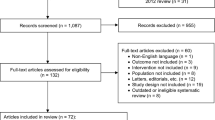Abstract
Introduction and hypothesis
It is unknown whether gabapentin modulates the therapeutic effect of anticholinergics (AC) in patients with overactive bladder. We hypothesized that pre-existing gabapentin use would improve response rates in these patients.
Methods
Female patients treated with AC between 2010–2018 were identified. Data were collected on gabapentin use, indication, dose and duration of use as well as demographic and clinical characteristics. Patients were stratified by those that only took AC and those that took both AC and gabapentin (“combination therapy”). Response was determined through chart review. Descriptive statistics were expressed as medians and interquartile ranges (IQR). Pairwise analysis was performed using Wilcoxon rank-sum. Multivariable logistic regression was used to identify independent variables predicting response. A subgroup analysis was performed in patients with chronic pain disorders.
Results
Seven hundred fifty-six subjects met all criteria; 16.5% (n = 125) were on combination therapy. Those taking gabapentin were more likely to have chronic (49.6% vs. 22.5%, p < 0.001) or neuropathic pain (25.6% vs. 9.4%, p < 0.001) and to use narcotics (41.6% vs. 15.5%, p < 0.001). Patients taking combination therapy were not more likely to improve compared to patients taking AC alone (41.6% vs. 47.7%, p = 0.211), which persisted after adjusting for confounders (aOR = 1.02, 95% CI: 0.63–1.65). In the 182 patients with chronic pain, those receiving combination therapy were more likely to respond than those taking AC alone (35.2% vs. 21.9%, p = 0.0015), although this did not persist after adjusting for confounders (aOR = 1.15, 95% CI: 0.70–1.90).
Conclusions
Pre-existing gabapentin use does not seem to influence response to AC in patients with overactive bladder.
Similar content being viewed by others
References
ICS Glossary [Internet]. ICS. [cited 2021 Nov 20]. Available from: https://www.ics.org/glossary.
Peyronnet B, Mironska E, Chapple C, Cardozo L, Oelke M, Dmochowski R, et al. A comprehensive review of overactive bladder pathophysiology: on the way to tailored treatment. Eur Urol. 2019;75(6):988–1000.
Andersson K-E. Pharmacotherapy of the overactive bladder. Discov Med. 2009;8(42):118–24.
Griffiths D, Clarkson B, Tadic SD, Resnick NM. Brain mechanisms underlying urge incontinence and its response to pelvic floor muscle training. J Urol. 2015;194(3):708–15.
Carbone A, Antonio C, Palleschi G, Giovanni P, Conte A, Bova G, et al. Gabapentin treatment of neurogenic overactive bladder. Clin Neuropharmacol. 2006;29(4):206–14.
Kim YT, Kwon DD, Kim J, Kim DK, Lee JY, Chancellor MB. Gabapentin for overactive bladder and nocturia after anticholinergic failure. Int Braz J Urol Off J Braz Soc Urol. 2004;30(4):275–8.
Chua ME, See MC, Esmeňa EB, Balingit JC, Morales ML. Efficacy and safety of gabapentin in comparison to solifenacin succinate in adult overactive bladder treatment. Low Urin Tract Symptoms. 2018;10(2):135–42.
Ansari MS, Bharti A, Kumar R, Ranjan P, Srivastava A, Kapoor R. Gabapentin: a novel drug as add-on therapy in cases of refractory overactive bladder in children. J Pediatr Urol. 2013;9(1):17–22.
von Elm E, Altman DG, Egger M, Pocock SJ, Gøtzsche PC, Vandenbroucke JP, et al. The Strengthening the Reporting of Observational Studies in Epidemiology (STROBE) statement: guidelines for reporting observational studies. J Clin Epidemiol. 2008;61(4):344–9.
Sheyn D, Martin NM, Walden L, Roberts KM, El-Nashar S, Hijaz AK, et al. Baseline brain segmental volumes in responders and nonresponders to anticholinergic therapy for overactive bladder syndrome. Female Pelvic Med Reconstr Surg. 2021;27(2):e399–407.
Dash V, Bawa M, Mahajan JK, Kanojia RP, Samujh R, Rao KLN. Role of gabapentin and anticholinergics in management of neurogenic bladder after repair of spina bifida - a randomized controlled study. J Pediatr Surg. 2016;51(12):2025–9.
Marencak J, Cossons NH, Darekar A, Mills IW. Investigation of the clinical efficacy and safety of pregabalin alone or combined with tolterodine in female subjects with idiopathic overactive bladder. Neurourol Urodyn. 2011;30(1):75–82.
Stahl SM, Porreca F, Taylor CP, Cheung R, Thorpe AJ, Clair A. The diverse therapeutic actions of pregabalin: is a single mechanism responsible for several pharmacological activities? Trends Pharmacol Sci. 2013;34(6):332–9.
Franco I. Pediatric overactive bladder syndrome: pathophysiology and management. Paediatr Drugs. 2007;9(6):379–90.
Soda T, Tashiro Y, Koike S, Ikeuchi R, Okada T. Overactive bladder medication: Persistence, drug switching, and reinitiation. Neurourol Urodyn. 2020;39(8):2527–34.
Tijnagel MJ, Scheepe JR, Blok BFM. Real life persistence rate with antimuscarinic treatment in patients with idiopathic or neurogenic overactive bladder: a prospective cohort study with solifenacin. BMC Urol. 2017;17(1):30.
Sussman D, Yehoshua A, Kowalski J, Lee W, Kish J, Chaudhari S, et al. Adherence and persistence of mirabegron and anticholinergic therapies in patients with overactive bladder: a real-world claims data analysis. Int J Clin Pract 2017;71(3–4).
Author information
Authors and Affiliations
Contributions
K Roberts: Data collection or management, Data analysis, Manuscript writing/editing
A Dao: Data collection or management
A Alfahmy: Data collection or management, Manuscript writing/editing
D Mitchell: Manuscript writing/editing
D Sheyn: Protocol/project development, Data analysis, Manuscript writing/editing
Corresponding author
Ethics declarations
Conflicts of interest
The authors declare that they have no conflict of interest. However, David Sheyn has received funding for research support from Renalis and the Eunice Kennedy Shriver National Institute of Child Health and Human Development. All other authors have no disclosures or additional sources of funding.
Additional information
Publisher’s note
Springer Nature remains neutral with regard to jurisdictional claims in published maps and institutional affiliations.
Meetings
This work was presented as an e-poster at the AUGS PFD Week 10/12/21–10/15/21 (Phoenix, AZ).
Rights and permissions
About this article
Cite this article
Roberts, K., Dao, A., Alfahmy, A. et al. Does gabapentin impact response to anticholinergics for overactive bladder?. Int Urogynecol J 33, 2501–2506 (2022). https://doi.org/10.1007/s00192-022-05231-4
Received:
Accepted:
Published:
Issue Date:
DOI: https://doi.org/10.1007/s00192-022-05231-4




